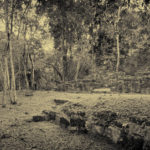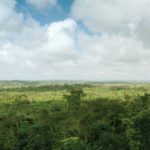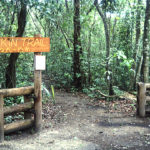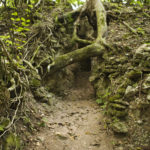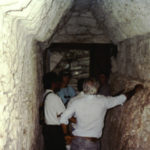El Pilar Archaeological Reserve for Maya Flora and Fauna
El Pilar is emerging today as a symbol of collaboration across political, economic, and cultural boundaries.
Here, a visionary management framework has taken shape. Under the direction of University of California, Santa Barbara Archaeologist Anabel Ford, Exploring Solutions Past, and collaborators, the El Pilar project has developed programs that construct bridges among people, nations, and disciplines to create a conservation model applicable around the world.
For centuries, dense forests have been the guardians of the ancient Maya city of El Pilar on what is now the international boundary of Belize and Guatemala. The creation of the El Pilar Archaeological Reserve for Flora and Fauna enables us to step back in time and experience life as an ancient Maya. At El Pilar we can enter centuries-old homes, stroll lush Maya forest gardens, encounter the native plants and animals that nourished a civilization, and experience the evocative atmosphere of an ancient lost city.
- Maya house site Tzunu’un
- Visitors at El Pilar
- View from Pilar Poniente
- Entrance to the Lakin Trail at El Pilar
- Looters trench at El Pilar
- Zotz Na tunnel
El Pilar flourished as a Maya city for nearly 2,000 years. It was the largest urban area in the Belize River region, more than three times the size of other well-known centers such as Baking Pot or Xunantunich. At its peak El Pilar was home to 15,000- 20,000 people in a mosaic landscape of city houses and gardens, surrounded by managed forest and agricultural fields.
This ancient Maya city center has more than 26 identified plazas in an area of approximately 100 acres (38 hectares), ranking it equal with major centers of the lowland Maya region. Despite its large size, El Pilar was unexplored by archaeologists until 1983.

Today, El Pilar is at the heart of a 5,000-acre protected archaeological reserve for flora and fauna, welcoming visitors and engaging scholars. El Pilar is managed using the principles of Archaeology Under the Canopy, preserving the integrity of both the forest and the structures it shelters. This management approach uses the forest surrounding the site to protect structures, honoring the forest and lending a feeling of mystery and discovery for those who visit.
El Pilar offers visitors a glimpse of what the everyday life of the Maya looked like, with the fully excavated house site and forest garden, Tzunu’un. These features at El Pilar emphasize the ancient Maya people, not just the governing elites. Multidisciplinary studies focus on where the Maya built their homes (settlement patterns), when they lived there (ceramic chronologies), and how they fed their large populations (agricultural practices).
